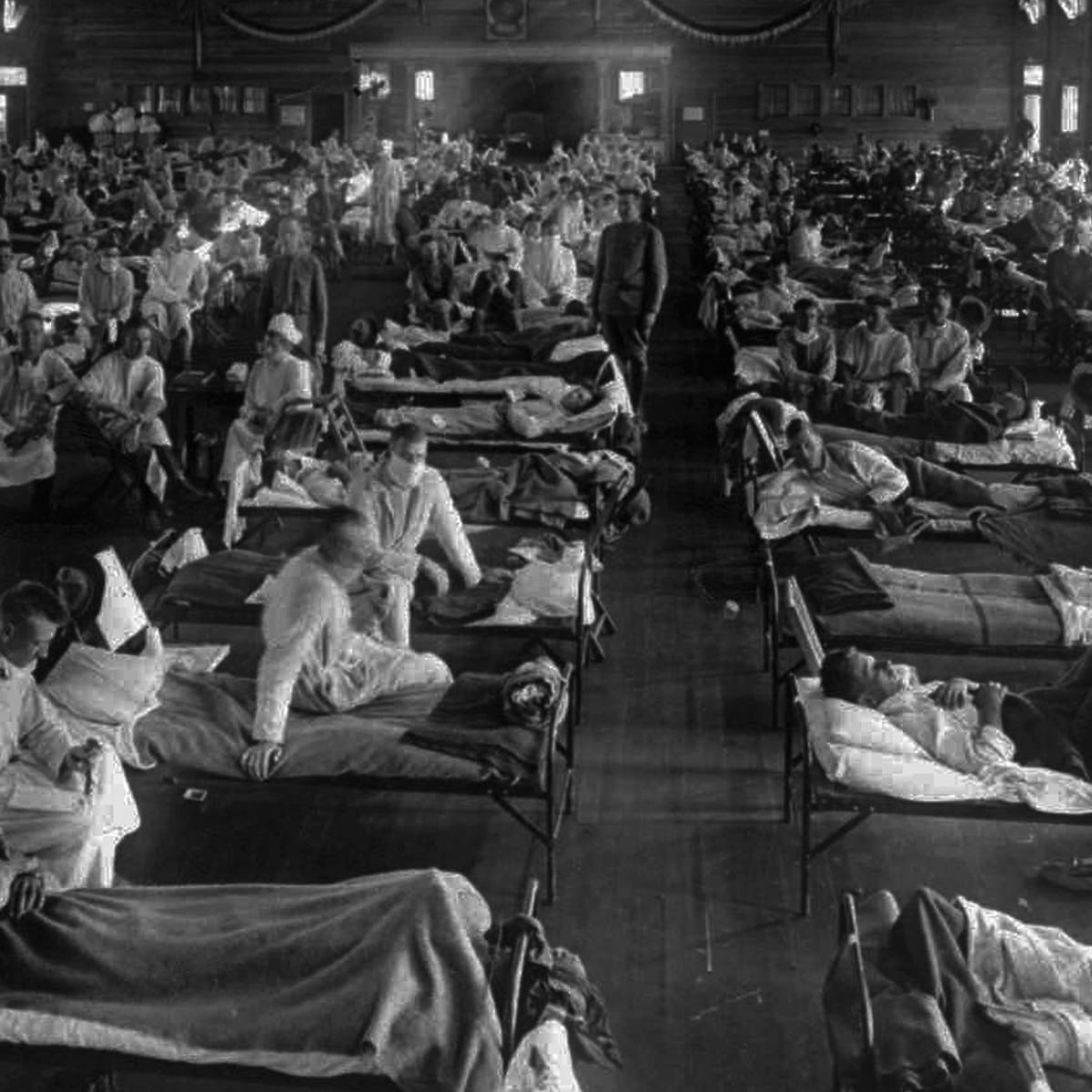Over time those who contracted the virus developed an immunity to the novel strand of influenza and life returned to normal by the early 1920s according to historians and medical experts. Sporadic flu activity spreads unevenly through the United States Europe and possibly Asia over the next six months.
 How They Flattened The Curve During The 1918 Spanish Flu
How They Flattened The Curve During The 1918 Spanish Flu
The first wave was comparatively mild and probably originated in.

How long did 1918 flu last. The name of Spanish Flu came from the early affliction and large mortalities in Spain BMJ10191918 where it allegedly killed 8 million in May BMJ 7131918. Within a week the number of flu cases quintuples. Overall the Spanish flu was present in England from June 1918 to April 1920 in three different waves meaning it was in the country for just under two years.
More than 100 soldiers at Camp Funston in Fort Riley Kansas become ill with flu. However during the summer a more lethal type of disease was recognized and this form fully emerged in August 1918. MONDAY April 20 2020 HealthDay News -- The virus struck swiftly stoking panic fear and mistrust as it.
However a first wave of influenza appeared early in the spring of 1918 in Kansas and in military camps throughout the US. Encyclopedia Britannica and the Center for Disease Control indicate that the pandemic occurred in three waves. Why October 1918 Was Americas Deadliest Month Ever.
In the United States it was first identified in military personnel in spring 1918. The pandemic spread to remote Pacific Islands and the Arctic. In the Northern Hemisphere the first wave originated in the spring of 1918 during World War I.
Though the Spanish Flu Pandemic lasted a year and a half having started in January 1918 and mostly ended by June 1919 most deaths took place in a 16 week period from September to December 1918. The flu was first observed in Europe. The first wave of influenza was comparatively mild.
The influenza pandemic of 191819 also called the Spanish flu lasted between one and two years. Wherever it began the pandemic lasted just 15 months but was the deadliest disease outbreak in human history killing between 50 million and 100 million people worldwide according to. Today as the world grinds to a halt in response to the coronavirus.
About 500 million people were infected across the world with a population of 180 billion people. The 1918 influenza pandemic was the most severe pandemic in recent history. Pandemics That Changed History.
The influenza pandemic of 191819 also called the Spanish flu lasted about one to two years. The Influenza pandemic of 1918 was a serious pandemic of influenza. The pandemic occurred in three waves though not simultaneously around the globe.
The first peak is observed during October and November of 1918 and the second peak is seen between February and March of 1919. Four Lessons From the 1918 Spanish Flu Pandemic. In the case of the 1918 pandemic the world at first believed that the spread had been stopped by the spring of 1919 but it spiked again in early 1920.
It lasted for three years from January 1918 to December 1920. Spanish Flu Symptoms The first wave of the 1918 pandemic occurred in the spring and was generally mild. Half of all deaths in 1918 were of people between 20-40 years old and the virus was especially virulent with a case fatality rate of 25 compared to.
Few noticed the epidemic in the midst of the war. It was caused by an H1N1 virus with genes of avian origin. Amid 1918 Flu Pandemic America Struggled to Bury the Dead.
The sick who experienced such typical. Although there is not universal consensus regarding where the virus originated it spread worldwide during 1918-1919. Pneumonia often developed quickly with death usually coming two days after the first indications of the flu.
The 1918 flu also known as the Spanish Flu lasted until 1920 and is considered the deadliest pandemic in modern history.



